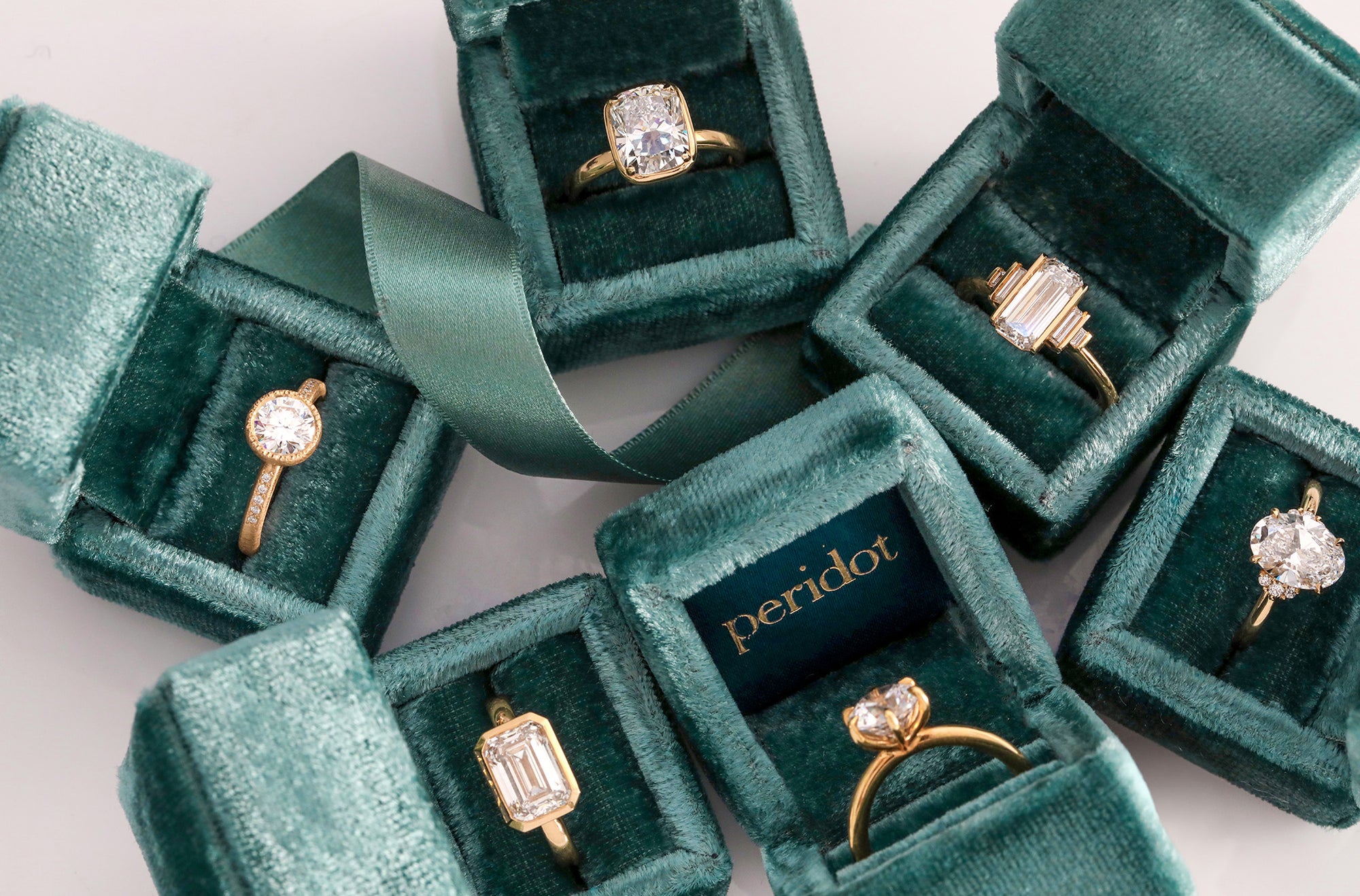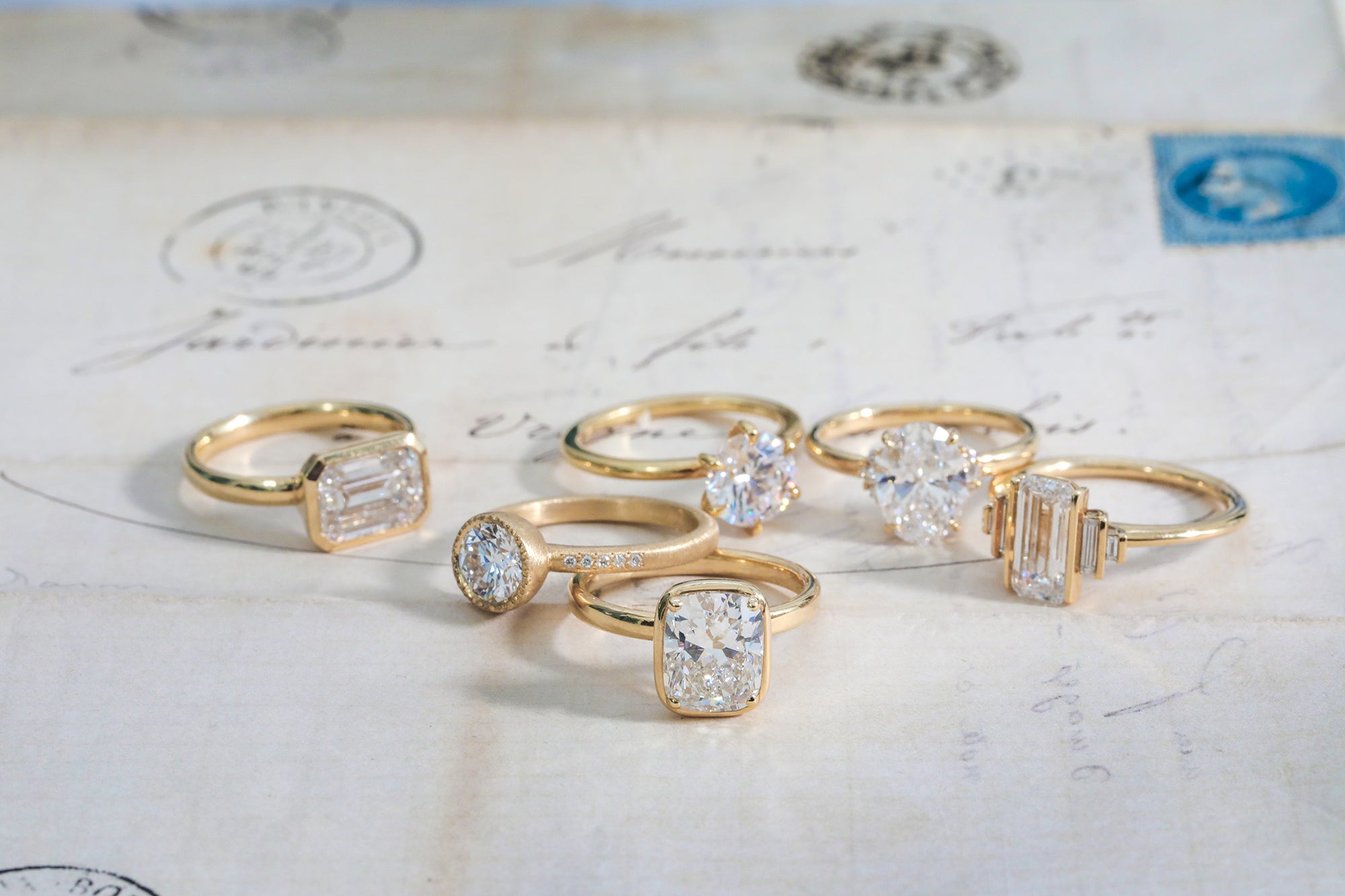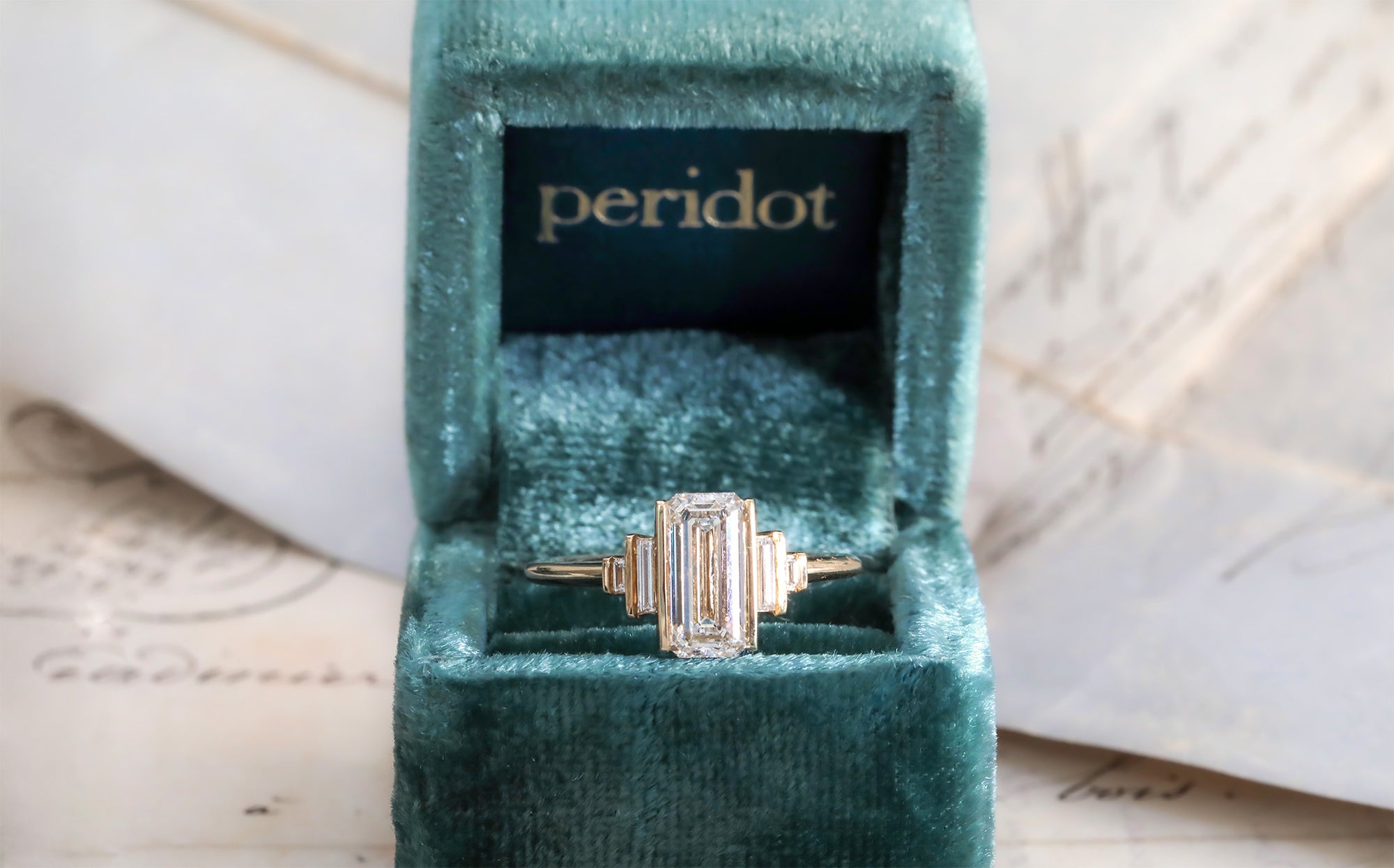PERIDOT'S GUIDE TO
Buying an Engagement Ring

At Peridot, we believe that choosing an engagement ring should be a joyful and memorable experience. This guide is designed to help you navigate the process, from choosing between mined versus lab grown diamonds, to understanding the 4Cs, to selecting the perfect style.
LAB GROWN VS. MINED DIAMONDS
Which should I choose?
In recent years, lab-grown diamonds have emerged as a popular alternative to mined diamonds. These diamonds are created in a laboratory environment that replicates the natural process of diamond formation, and are 100% identical to a mined diamond from the earth. The only difference between a mined and a lab grown diamond is the source.
Lab grown diamonds tend to be a budget friendly option as they are easier to produce - think of mining a diamond from the earth - it’s a bit more rare and requires extensive resources.
Mined diamonds are a testament to nature’s beauty and all that the earth can produce. At Peridot, we work with designers who ensure that they use only ethically sourced and conflict free mined diamonds in their work. Mined diamonds continue to go up in value year over year. While we’re not yet sure on the future of lab grown diamonds, it’s been said that they do not hold their value as well as a mined diamond.

THE 4 C'S
A foundation for understanding diamonds
When it comes to diamonds, the 4C's - Cut, Color, Clarity, and Carat Weight - are the cornerstones of quality.
You might think that “cut” refers to the diamond’s shape or style (like emerald cut, cushion cut, etc). But when it comes to the 4Cs, cut refers specifically to the quality of the cut of a round brilliant diamond: the proportion and symmetry of the gem and how well the angles of the facets reflect light within the stone to maximize the diamond’s brilliance.
This can be one of the more important factors to pay attention to - because a properly cut diamond provides the sparkliest version of the stone. The more it sparkles, the larger and more vibrant the stone appears.
A diamond's cut is graded on a scale from poor to excellent. Learn more about the GIA scale for diamond cut.
The color grade of a diamond is actually about the lack of color: the closer to “colorless” a diamond is, the more rare and valuable it is. The color scale goes from D to Z, with D being the most pure white/colorless diamond, and each letter grade getting the slightest bit more yellow as you advance along the alphabet to Z.
Diamonds graded D, E, and F are all considered “colorless” and look nearly identical to the untrained eye. “Near-colorless” diamonds in the G-J range still make great center stones for your platinum engagement ring. K is where the yellow tinge becomes more apparent to the naked eye, but can still be used in a yellow/rose gold setting to offset the warmer tones of the diamond.
Learn more about the diamond color scale on the GIA site here.
The Clarity of a diamond notes the existence of natural imperfections, or "inclusions", within the stone
Flaws are not necessarily bad because most are not visible to the naked eye. The quality is graded on a scale of “Flawless” to “Included,” taking into account the number, position, and size of inclusions; some can be seen with the naked eye, whereas some can only be seen under a microscope.
A diamond's weight is measured in carats (ct), using very sensitive scales that determine the weight to the thousandth of a carat. The cost of a diamond tends to increase with its carat weight, because larger/heavier diamonds are more rare.
All other things being equal, diamonds of equal weight would cost the same. However, each diamond is unique so the other C's also factor into the cost.
Learn more about diamond carat weight on the GIA website here.
CHOOSING THE RIGHT STYLE
Your engagement ring should be a reflection of your unique style and personality. Here are a few popular styles to consider:
THE PERIDOT DIFFERENCE
At Peridot, we want to give you every option possible to make your dream ring come to life. We are committed to providing an exceptional experience for you! When you choose Peridot, you choose
A wide selection: We offer a diverse collection of diamonds, gemstones, and settings to suit every style and budget.
Custom design: If you can't find the perfect ring in our collection, we can create a custom design just for you.
Lifetime care: We offer lifetime cleaning and inspection services to keep your ring looking its best.




